September 3, 2009
After leaving Canajoharie we traveled 17.7 miles and tied up on the east side of Lock 17 along the lock wall. There was a lot to see and do in this area, and we picked an excellent spot to be able to watch activities at Lock 17 and access the town of Little Falls.
Lock 17 is unique to the NYS Canal system in that it has a vertical lift gate, one of two in North America; the other one being in Ottawa, Canada. Boats are raised or lowered 40', requiring 5 million gallons of water. When boats go under the gate, water drips on them (and line handlers standing outside!).
We have experienced some turbulence when locking through the bigger locks and wondered how we would do in Lock 17 when we had to go through it. I was talking to lock operator Scott, a congenial, chatty man, and he told me that deeper draft vessels should pull far forward and ask for a slow lift. That way the water flow coming in to fill the lock will be slowed down and not push us so hard into the wall, minimizing our fenders being crushed and not having to push to keep FLUKE off the lock wall. We followed his advice when we locked through, and we had less movement than when we had locked through the 30' high locks.
Like a lot of the present lock sites, Lock 17 is adjacent to one of the phase 2 Erie Canal abandoned locks, over 150 years old. I am standing right where one of the old gates would have been located, where the blocks have a rounded edge. Notice how tight the blocks fit together, with no mortar, and what great shape they are still in. The stone work is so perfect and uniform, all of that work done in a time when there weren't any power tools available.
You can access Moss Island by crossing over the top of Lock 17. There are several informative displays which help explain some of the geological history of the area and why it is so unique. Moss Island, and the area on either side of the river in this area, is composed primarily of syenitic gneiss (pronounced nice) which are some of the oldest rocks in geological history and comprise the ancient roots of the Adirondack Mountains. The rocks are smooth to the touch, and Moss Island has trails that weave in, out, over, and around all sizes and shapes of boulders. Some jut right out over the river, providing spectacular views of the water below and adjacent mountains above. There are places where ancient water flows carved out circular tunnel shapes through the rock and look as though someone took a gigantic auger and drilled through the rock and then smoothed over the sides.
On the outer boundaries of the island, where the rocks are not directly adjacent to the water, a large rock mass fronts the canal area with an adjacent land path. Rock climbers scale the boulders, some with all the rope gear, dangling themselves over the upper ledges. Other climbers scale the rocks with their bare hands. People gather just to watch the climbers, and so did we.
The path visible in the above photo is on the north side of the canal and is an easy, picturesque, way to get into Little Falls. The electric poles in the photo are associated with the local power plant that utilizes the water from the canal and river to produce clean energy to power 8,000 homes. You have to walk over a grated area that is part of the power plant's intake area. It is safe and secure, but dogs hate to walk over the grates because their toes get caught. The power company made the walkway dog friendly by putting in rubber matting in a strip with a sign saying “Dog Path”.
Little Falls appears to be the most prosperous town we have visited so far on the Erie Canal. The area is the narrowest point in the Mohawk Valley, site of a natural deep gorge, just with tumbling cataracts, not waterfalls. It originally prospered as a mill town (there are no mills left) and a cheese producing area in the mid-1800s. One factoid stated that 380,000 lbs. of cheese were sold at the cheese market in a single day for “export” from the area.
A walk around town shows well kept period homes. The downtown area still has a lot of businesses in operation and has a small town feel to it, and it is possible to shop for small amounts of groceries, hardware, health and drug items, and there is even an operating motel and cinema. Canal Place is a site of a few boutiques, restaurants, and antique shops. Our favorite store turned out to be the Community Co-op which sells fresh produce, bulk spices, lots of organic foods, and similar specialty products.
A Canalway Trail, a paved path, is located on the south side of the lock area and canal, and you can access Little Falls by taking that as an alternate route. It was once the old railway route, and you walk through areas of the gneiss stone formation which had to be blasted out for the railroad, and you even go through a tunnel.. In the winter the trail is used for cross country skiing.
Taking the Canalway Trail 1 ½ miles east from Lock 17 will take you to the Herkimer House Historic Site. The 1764 home belonged to General Nicholas Herkimer who is credited with winning the Battle of Oriskany during the Revolutionary War. It is a pleasant walk to get to the site; you walk from high up on the side of the mountain to down right next to some swamp land. We passed over a flowing stream, and Eddie and I scampered down into the stream bed to look for Herkimer diamonds and interesting rocks. I found a big mammal bone of some kind. Hopefully it wasn't a human bone because I left it on one of the display plaques at the Herkimer House, and it may cause a real mystery. We don't need to have that added to our “rap” sheet for this voyage!
Now that I've mentioned the Herkimer diamonds I need to explain what they are. Through millions of years of geological forces, water rich silica was turned into clear, hexagonal quartz crystals with points at both ends, which came to be called Herkimer diamonds. Local rock quarries mine an area that has several veins of the quartz running through them. The rock is used for fill, driveways, and construction projects, and it is common to find the quartz crystals embedded in the rock or “pure” by themselves, all of varying quality. A couple of the quarries allow visitors to try their hand at “prospecting” and dig for the diamonds. I would have loved to have spent some time doing that, but the mines were too far to walk and would have taken up too much time from our other activities. So, I put it on my “list” to try to buy a diamond along the way while we were in the area. That proved much more difficult than what I thought it would. I figured my best chance would be at our next stop, Herkimer.
We only had to travel about 10 miles to dock where we would have good access to the town of Herkimer. This stretch of the canal is not very scenic, and it was the first time we have seen significant work being done on the canal itself. We always enjoy seeing the construction equipment, and all the NYS Canal equipment is painted their standard gold and blue and looks great.
These workers were involved in part of a dredge operation. Notice the big arrow on top of the dredge directing river traffic to go left. The tugs we have seen range in size from little ones like this to ones 80' long. If you look closely you will see a porta potty between the tug and the crane barge. I found it amusing that the porta potty was actually on its own little floating platform and must just get pushed around like that to the different sites.
That mud isn't really floating; it is on a mud barge. When we approached, they had to move the barge out of the way for us to pass by, and they called us on the radio to ask us to stay back until they were able to move it far enough. The mud barge has large open “bins” that can be filled with the gunk and debris that gets scooped out of the river. When it is filled up, like you see in this photo, it gets moved to another location where it can be unloaded. The debris above the deck level can be picked off, but the material left down inside the bin, below deck level, can't easily be scooped out. So, they pump water into the bin and make a slurry out of the stuff and then suck it out and deposit it to a shore side location.
We went through Lock 18 and 5 miles later pulled up to a free dock at a place called Gems Along The Mohawk. Sounds like a place I should be able to get some of those diamonds, huh? We are now at an elevation of 383'. This place is right by Exit 30 of the NY Thruway, and the traffic noise is awful, the most of any stop we've made. Cruisers like to stop here because there are major shopping opportunities within reasonable walking distance.
Gems Along The Mohawk is a typical tour bus stop where you can get off the bus, have a meal at a place called the Waterfront Grill and then shop in the store for all kinds of souvenir items representing commerce from the area. They have some of the diamonds, but they are all in pure crystal form, ready to be made into jewelry, or already a jewelry piece, not what I had in mind. I really wanted to find one still embedded in the rock, which they had, but for display purposes. Oh, you can also take an Erie Canal tour here on a pontoon boat; you get a canal history and go through a lock, probably worthwhile.
Since we were going to check out the town anyway, I thought I might find some at a shop in town. I asked at a couple of places, but most people just go to the mine to get them directly and don't resell them. I figured my best bet might be a junk or resale shop, where you can find anything.
I spotted a shop called Cosmic and asked a couple of people waiting for a bus what it was. They said it was a head shop, but thought they might have some crystals too since some people think crystals and drugs go together.
Eddie and I checked out the place, and a nice woman, our age, was running it for her son. She had some of the crystals, but they were for display. Eddie's mind wandered back in time as he looked at all the new versions of drug paraphernalia, jewelry, and clothing. He ended up buying a peace symbol necklace, bracelet, and earring. Isn't it nice to know I could borrow his stuff if I needed it for that special outing?
Still searching for the diamonds, I walked into a junk store and told the guy what I wanted. Even though he didn't have any in the store, his mother was running their “branch” store a couple of blocks over, and she had some there. He would call ahead and let her know we were coming.
Well, she had a lot of the diamonds, piles of them, all of varying degrees of clarity and purity. We spoke at length of how they were acquired, and I found a small one attached to a tiny piece of rock that I figured was going to be the best that could come to my specifications. She was a wheeler dealer and showed me a pure diamond that she called a twin, which were two small perfect crystals joined together. They were very pretty, and she said I could have them for $10. While I agreed they were nice, I really wanted the one with the dirty rock attached, so she said I could have it for $5, and we struck a deal.
We weren't done with her though, because I had to show her my gem. I went outside and brought in Ursa. I already had found out she was a dog lover (she had pugs), so I knew she would get a kick out of Ursa. I put Ursa through her trick routines, and the woman loved it. She said she liked me so much, she wanted me to have the twin diamonds as a gift! I've tried to take a picture of the treasure.
How To Protect The Treasure
The next day we walked 2 miles to tour the Remington Arms factory and museum in Ilion. Eddie didn't think it was a good idea to wear his new peace symbol jewelry to the gun factory. It was a pleasant walk through the little towns of Mohawk and Ilion, right along their main streets. I saw this sign painted on the side of a building. We bought corn from a little unmanned stand set up in front of someone's house, and you put the money in an ammunition box.
I had to laugh because when we were in Maine I kept seeing similar signs and thought they were some sort of religious enterprise. It took me a long time, and closer observation, to figure out they are places where you are supposed to cash in your recyclable products that originally required a deposit.
The Remington Arms factory has been in production since the early 1900s and still employs almost 1000 people. In fact, they have added employees since the beginning of the year to meet the increased demands for rifles which have occurred since the Democrats were voted into office.
The museum has displays of firearms which trace their historical significance. Paintings depict sporting art. You learn that Remington also manufactured typewriters, sewing machines, bridges, farm equipment, and knives.
The highlight of the visit was getting a factory tour which took us through all the phases of manufacturing, including the area where the custom rifles are made by real craftsman. Some of the rifles costs up to $30,000 because of the special engraving in the wood or metal that is required. It was interesting seeing the varied type of equipment that is used in the manufacturing process, some of it still from the first factory days to new, high tech laser equipment of today. Annie Oakley, Little Miss Sure Shot, who owned a Remington 22 rifle would even be impressed!
Tomorrow we will travel the farthest since we began our voyage on the Erie Canal.
Thursday, September 03, 2009
Subscribe to:
Post Comments (Atom)
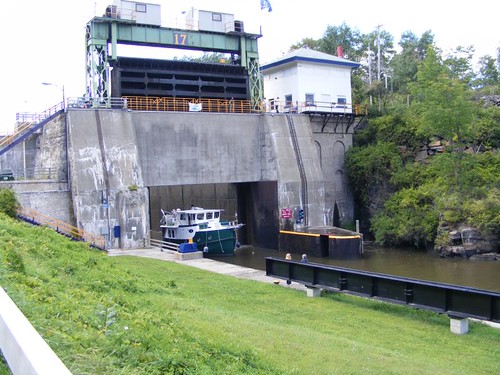
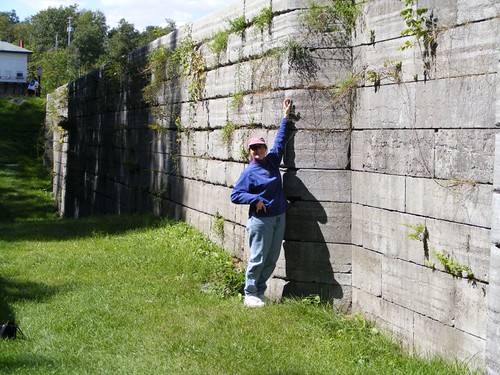

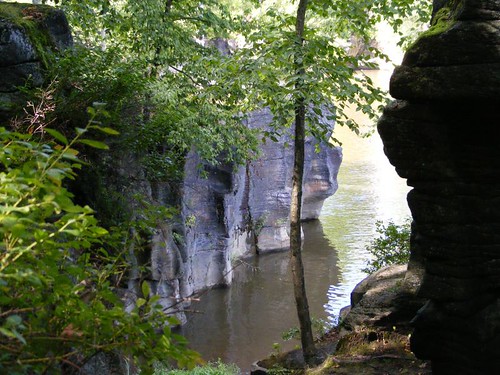
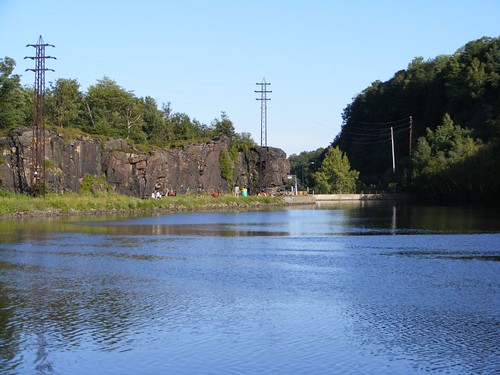
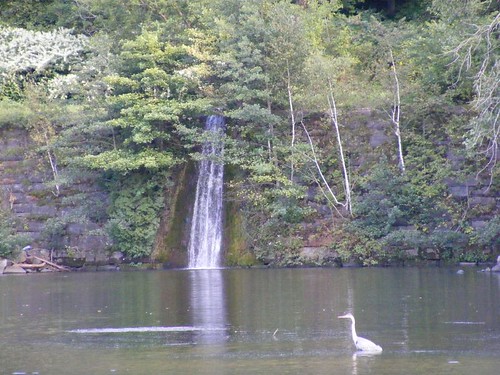
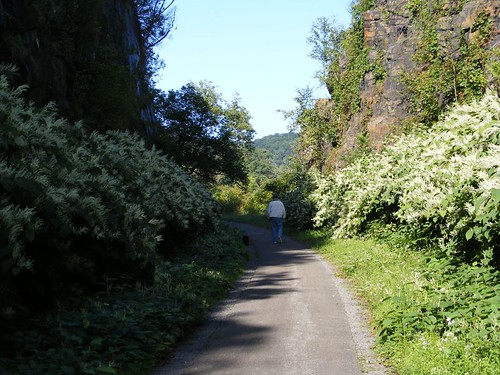
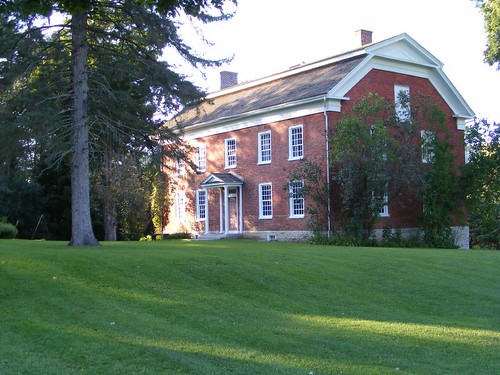
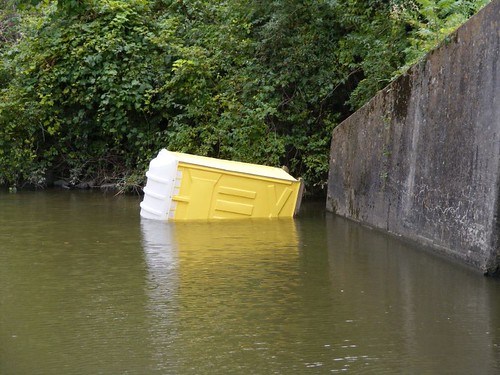
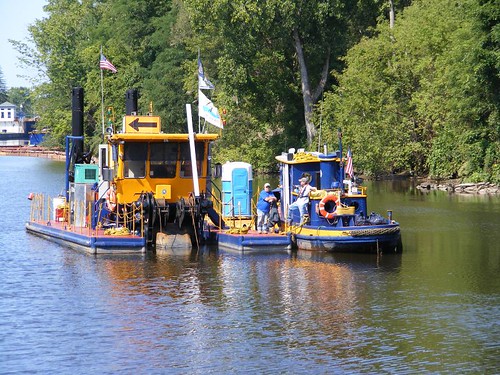
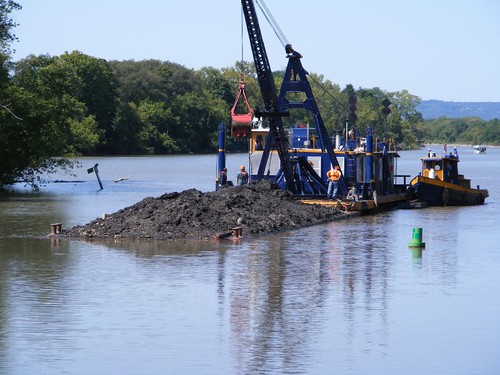
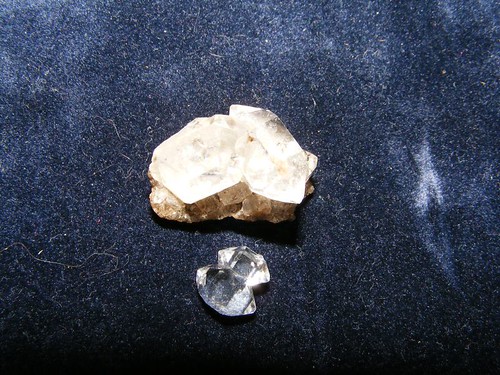
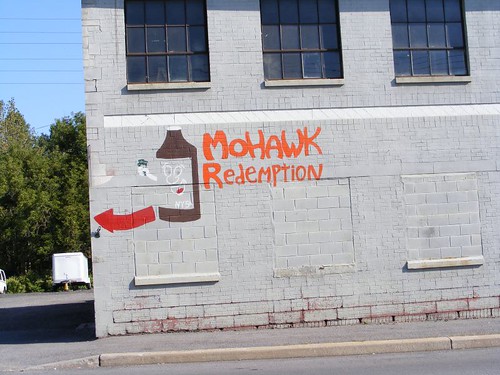
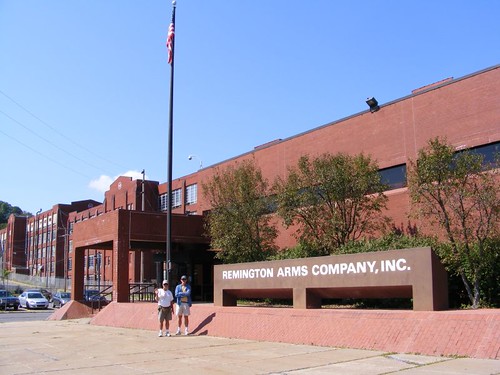
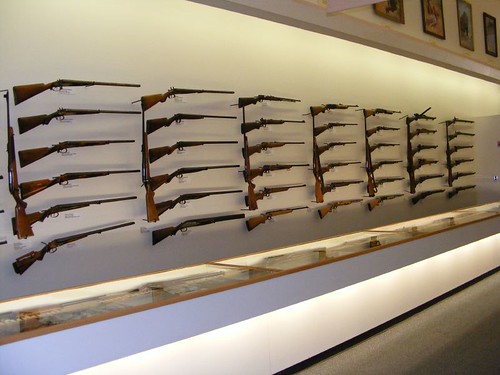








Loved the 'diamond' story!
ReplyDeleteIt's amazing how many truly wonderful folks you've met along your journey!
Happy travels,
Jerry